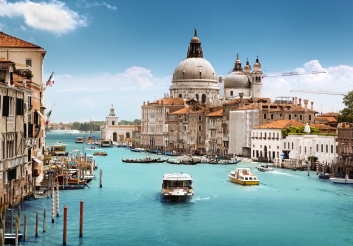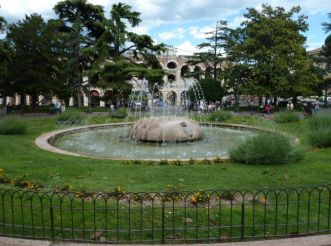Piazza San Marco, Venice
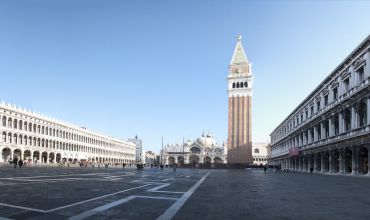
Piazza San Marco in Venice can be called the heart of the city. A lot of attractions are concentrated here, events and celebrations are held here. By the way, the Venetians themselves call San Marco simply "piazza", which means "squre". Other places that have the characteristics of the square in Venice are called "campi", that is, "fields". For example, Campi San Apostoli and the church with the same name. Piazzetta and Piazzale Roma are the exception. The continuation of Piazza to the Grand Canal is called Piazzetta. In fact, Piazza and Piazzetta San Marco form one large area where the political, religious and social life of Venice is concentrated.
Interesting facts about Piazza San Marco
- The construction of the square dates back to the beginning of the 9th century.
- On the side of the Palazzo Ducale, which overlooks the Biblioteca Marciana, there are two pink columns (made out of red Verona marble). The Doge stood here, announcing the death sentences. The death penalty was carried out between two columns: the Winged Lion and Saint Theodore. Venetians believe that passing between the two columns is a very bad sign.
- In front of the Piazza San Marco there are three flagpoles with the flags of Italy, Venice and the European Union. Flagpoles are the real ship masts. Originally they were established as a symbol of the conquest of Venice by three kingdoms: Cyprus, Crete and Peloponnese.
- Piazza San Marco is the lowest place in Venice. During the "acqua alta" (high water), San Marco is the first place to be flooded. Usually it happens in the winter.
- The bell tower on Piazza San Marco is supported by about 100,000 wooden pillars, each about 14 cm thick and 3 m high.
- At San Marco, 29, there is one of the oldest cafés in Europe and the oldest in Italy – Caffè Florian, founded in 1720. Interior is predominantly preserved since 1858. Uniqueness of the institution in many respects justifies the prices. A cup of coffee costs about 10 euros, and a dessert costs about 15 euros.
- According to some information, Napoleon called Piazza San Marco "the drawing room of Europe".
- The height of the St Mark's Campanileof Basilica is 98.6 m. You can climb to the observation deck.
- Walking around Piazza San Marco, you will see a lot of pigeons. Food for them is sold here. According to the legend, two pigeons were presented to the Doge as a sign of the completion of the construction of St. Mark's Basilica. The Doge saw the sign that the pigeons had landed on the temple, and signed a decree to feed the pigeons and their offspring.
History of the square
Since the 9th century to the present day the history of the development of the Venetian Piazza San Marco is conveniently divided into 4 periods.
Creation of the Piazza
This period covers the beginning of the 9th century and ends in the 12th century. It all started in 819, when the chapel of the Venetian Doge was built, in honor of the first patron of Venice – Theodore Tyron or Theodore (next to the current San Marco Basilica).
In 10 years, the Venetians and their Doges announced a new patron of the state – Saint Mark. To strengthen the position of Venice and give greater importance to the city, the relics of the saint were stolen from Alexandria in 829. Doge Justinian Partecipacius ordered to build a new church for their preservation. In 836 the first St. Mark’s Basilica was built. In 976, all the wooden elements of the church were burnt, in connection with the fire caused by the uprising against the Doge.
In 1063, with the new Doge Vitale Falier, the St. Mark’s Basilica was restored and significantly strengthened. The main part of the temple, which we see today, has not changed since that time.
The Middle Ages
The Venetian Doge of the late 12th century, Sebastiano Ziani created Piazza San Marco as it is today. He actively built up the northern (Procuratie buildings for the offices of prosecutors, and shops on the first floor) and the south side of the square (the main building is Ospizio Orseolo – it was a hostel for pilgrims at that time).
In the early 13th century, valuable materials were taken to decorate Venice from Constantinople (as a result of the Crusades). So the façade of St. Mark's Basilica was decorated with marble, mosaics and columns, and two square columns appeared on Piazzetta. You will definitely notice them, they stand separately in the middle of Piazzetta, this is the entrance from the water. Today, at the top of one of the columns there is the image of Saint Theodore, who conquers the monster of the crocodile. The second column is crowned by the bronze Winged Lion, which became the symbol of St. Mark, and later – of the whole Venice.
Also in the early 13th century, the reconstruction and expansion of the Doge's Palace (Palazzo Ducale) started. It opens at the Venetian lagoon on the one side, and on Piazzetta and St. Mark's Basilica on the other. The construction was delayed because of the raging plague. In 1424, active work began to expand the palace. It was decided to use the same style of construction. If you take a tour, the guide will probably show you the 7th column where the 14 and 15 centuries meet. This column is somewhat larger and differs in relief.
In the 15th century Giovanni and Bartolomeo Buon worked on different constructions of the square.
The Renaissance and the Fall of the Republic
In 1493 it was decided to build a clock tower, to replace the obsolete one. In 1499, the clock tower from the Codussi project was completed. Later, the building was constructed to strengthen the tower. Torre dell'Orologio, literally the Clock Tower, today is one of Venice's most famous sights. It is located in the northern part of Piazza. Note, this is an astronomical clock, also it shows the phases of the moon, the position of the Sun.
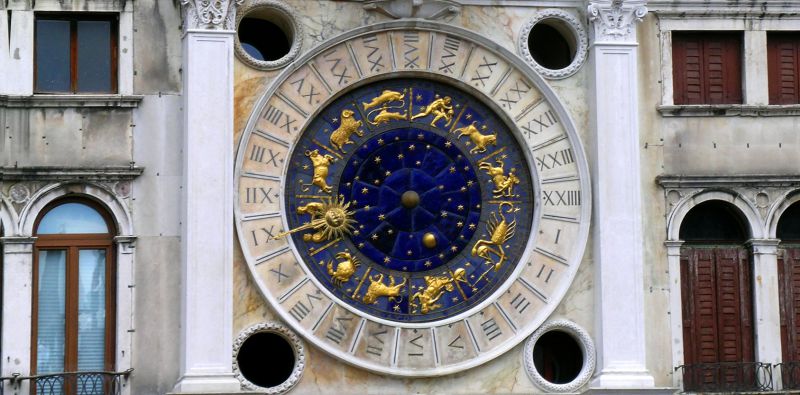
During the Renaissance period, Procuratie had a third floor. It is worth noting, the Republic of Venice and especially its capital Venice were significantly wealthy. Therefore, even in war times the construction did not stop. Something was constantly being completed, reconstructed and expanded in the city. Curiously, the Doges as rulers existed exactly for 1100 years. Everything ended in 1797, when the city was occupied by the French. The French revolution put an end to the once prosperous republic.
The Napoleon times till this day
After the invasion of Napoleon in May 1797, perhaps the first order was to demolish the bronze Winged Lion at Piazzetta, a symbol of Venetian independence and an aristocratic style of life. After the fall of Bonaparte, numerous injuries and restorations, the lion returned to Venice, to its former place. This was in April 1816.
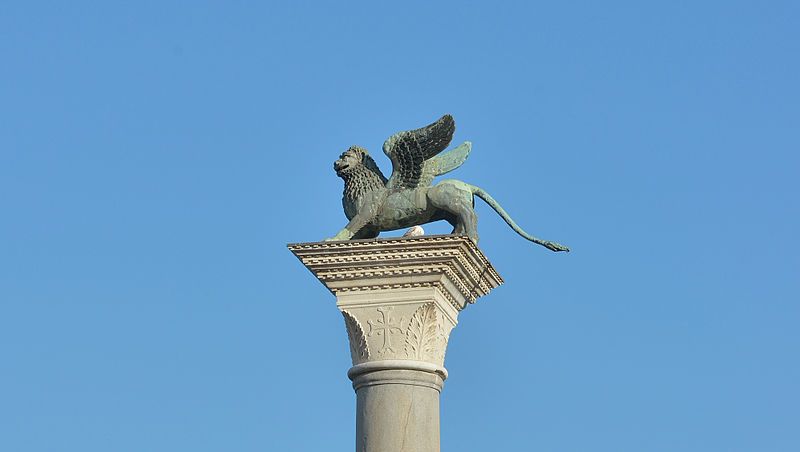
Sights on Piazza San Marco
When you are at the main square of Venice, you will feel all the luxury of the Republic of Venice. The sights of San Marco will impress you with abundance. Considering that usually people get to the square mainly from the water, we start with the sights of Piazzetta San Marco:
- Doge's Palace is the main residence of the rulers of the republic and a masterpiece of Gothic architecture. The place lives by history. Be sure to take the tour inside. Complex ticket to the palace and other museums of San Marco will cost about 20 euros.
- Biblioteca Marciana is the largest in Venice. It was built in the Renaissance style.
- The archaeological museum will impress the visitor with the exhibits of the times of Ancient Greece and Rome. Collection of coins, dating back to the 5th century BC will be no less interesting.
- Columns with sculptures of Saint Theodore and the Winged Lion. We wrote about them in the section on the history of San Marco.
- At one of the outer corners of St. Mark's Basilica (southern façade), you should pay attention to a sculpture made out of dark red material (porphyry). The sculpture is called The Four Tetrarchs, a work of the 4th century. There are suggestions that the sons of Constantine the Great are depicted here in sorrow after his death. The Venetians brought a sculpture from Philadelphion Square in Constantinople.
- Columns of Acre is another decoration, brought by Venetians from Constantinople in 1204, from the Church of St. Polyeuctus. Initially, it was assumed that the columns came from the Israeli city of Acre, hence the name. Two columns are located on the south side of Saint Mark's Basilica.
- From the Piazzetta San Marco you can admire the Venetian lagoon and the delightful San Giorgio Maggiore island.
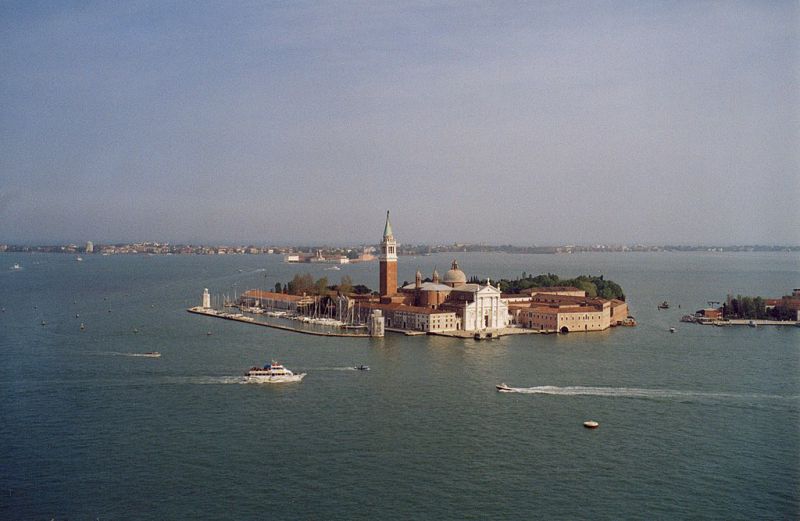
Attractions of Piazza San Marco:
- St. Mark’s Basilica is the main cathedral of Venice and the most recognizable landmark of Venice. The relics of St. Mark are kept in the cathedral since 836, the date of the foundation of the cathedral. The shrine is made in Byzantine style and is adorned with decorative elements. Of course, this is a must-see in Venice and, perhaps, in Italy as a whole.
- Quadriga of St. Mark. You can see it on the loggia of St. Mark's Basilica, above the central entrance. This landmark of San Marco is worthy of special attention. It is made of gold-plated bronze by the sculptor Lysippos in the 4th century BC. It is a very rare example of the preserved equine antique sculpture, the original is in the Museum of San Marco.
- Torre dell'Orologio is a clock tower with a unique clock. We have written about it in section about history.
- The San Basso church is on the right of the clock tower. It is closed for the public, but sometimes it is open during exhibitions.
- Procuratie is a series of buildings that served as houses and offices for Venice's prosecutors, are on the north side of Piazza San Marco. On the first floor there are many restaurants and shops.
- Two legendary cafés of San Marco: Caffè Florian 1720 years of foundation (in the arcade of Procuratie) and Caffè Quadri in 1775 (on the other side of the square).
- Napoleonic wing (Ala Napoleonica) is in the western part of the square, at the end of Procuratie – a ceremonial staircase built by Bonaparte in 1810. Today it leads to the Museo Correr.
- Museo Correr is an art and historical museum of Venice.
- The St Mark's Basilica Campanile and Lodgetta. A bell tower and an annex to it, stands alone on the square. You can climb to the top and observe the sights of San Marco and all of Venice from the observation deck, as well as see the five original bells of the tower.
 The painting of the Italian artist Canaletto in 1720, depicting the square of that time. It is like a photo of Piazza San Marco of the 18th century.
The painting of the Italian artist Canaletto in 1720, depicting the square of that time. It is like a photo of Piazza San Marco of the 18th century.
How to get there
It is the easiest to get to Piazza San Marco in Venice by water transport. Although, it is possible to get there on foot. For example, from the Stazione di Venezia Santa Lucia train station, such a walk takes at least an hour, passing through the streets and bridges. Directly at the station there is a ferry berth, from where vaporetto (water bus) goes every 10 minutes. You can use the route №2 and reach the pier of Rialto C (minutes 15), and then walk for about 5 minutes to Piazza San Marco. Or you can sail further along the Grand Canal to San Marco Pier. This way you will get to Piazzetta San Marco.



